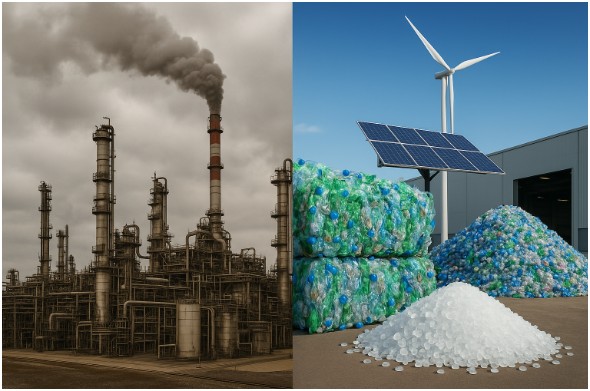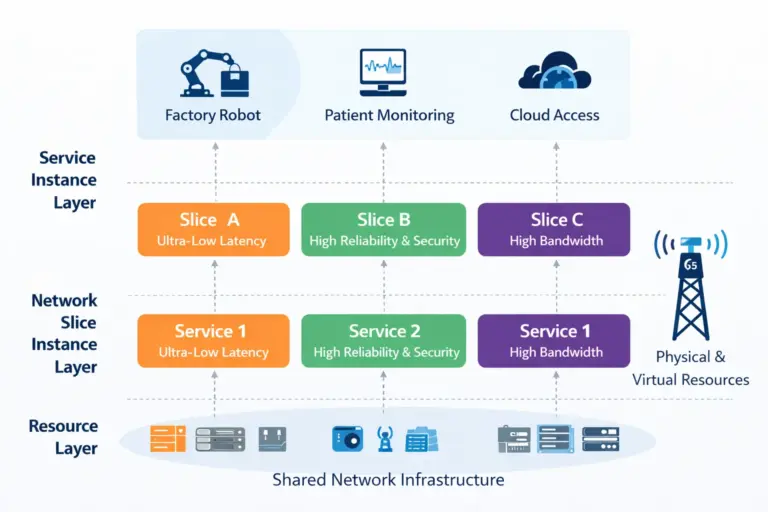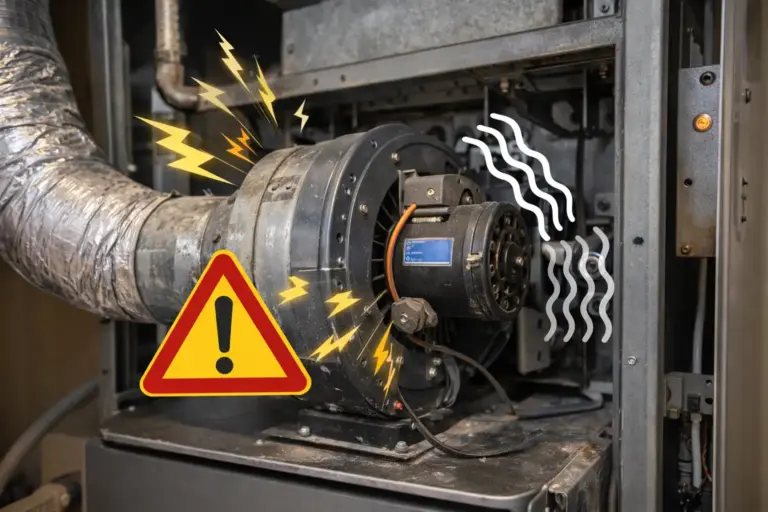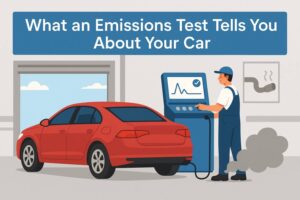As climate change intensifies and regulations become stricter, the choice between virgin and recycled plastic is more critical than ever.
This decision affects supply chains, carbon emissions, and environmental sustainability. Although both materials have similar uses, their production processes and carbon footprints differ significantly.
Virgin Plastic Production: The Carbon-Intensive Process
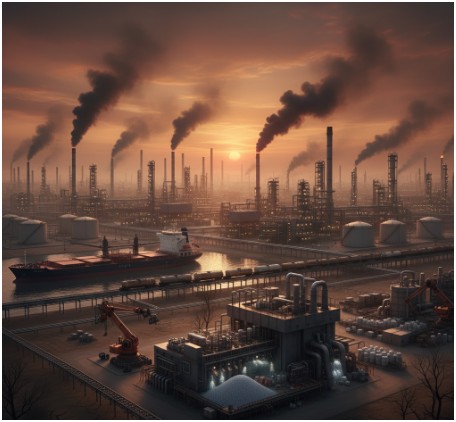
Virgin plastic begins its journey in oil refineries and petrochemical plants, where fossil fuels undergo complex chemical transformations.
The production process starts with crude oil extraction, which alone generates substantial carbon emissions through drilling, pumping, and initial processing operations.
Transportation of raw materials adds another layer of emissions. Crude oil travels from extraction sites to refineries, then to petrochemical facilities, and finally to plastic manufacturing plants. Each step in this supply chain burns fossil fuels and releases carbon dioxide into the atmosphere.
The manufacturing phase proves most carbon-intensive. Converting crude oil into plastic polymers requires high temperatures—often exceeding 800°C—sustained for extended periods.
These energy-intensive processes typically rely on fossil fuel-powered heating systems, creating a compound effect on carbon emissions. The polymerization process itself releases additional greenhouse gases as chemical byproducts.
Processing virgin plastic into final products demands further energy input. Injection molding, extrusion, and blow molding operations all require significant electricity consumption, much of which comes from carbon-intensive grid sources in many regions.
Recycled Plastic Production: A Lower-Carbon Alternative
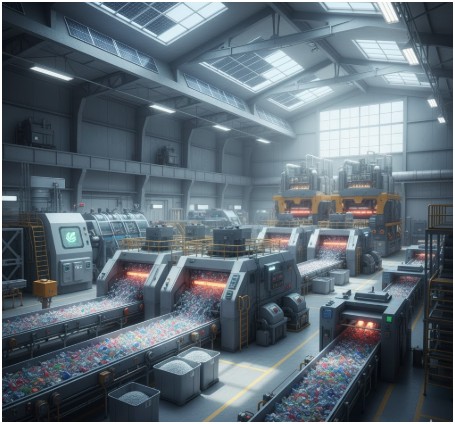
Recycled plastic follows a fundamentally different path that bypasses many carbon-intensive steps. The process begins with collection and sorting of post-consumer or post-industrial plastic waste, activities that generate relatively minimal direct emissions compared to oil extraction.
Cleaning and preparation stages require water and energy, but significantly less than virgin plastic production. Modern recycling facilities increasingly use energy-efficient washing systems and closed-loop water processes to minimize resource consumption.
The reprocessing stage—where sorted plastic waste transforms back into usable material—represents the most energy-intensive part of plastic recycling. However, this process operates at lower temperatures than virgin plastic production, typically requiring 200-400°C rather than 800°C or higher.
Some recycling operations also utilize specialized plastic toll grinding services to optimize material preparation and reduce processing energy requirements.
Mechanical recycling, the most common method, involves shredding, melting, and reforming plastic without breaking molecular bonds. Chemical recycling, though less common, breaks plastics down to their molecular components and rebuilds them, offering higher quality output but requiring more energy input.
Carbon Footprint Comparison: The Numbers Tell the Story
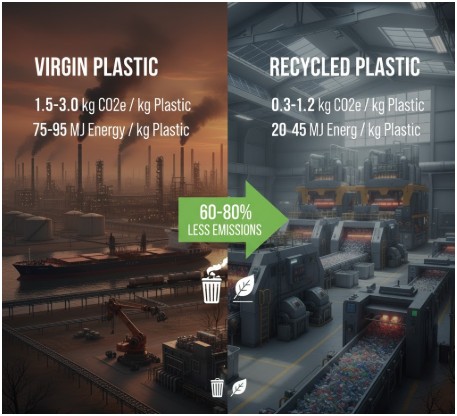
Research from multiple lifecycle assessment studies reveals significant carbon footprint differences between virgin and recycled plastic production.
Virgin plastic typically generates 1.5 to 3.0 kilograms of CO2 equivalent per kilogram of plastic produced, depending on the specific polymer type and production efficiency.
Recycled plastic production generates approximately 0.3 to 1.2 kilograms of CO2 equivalent per kilogram of finished material. This represents a 60-80% reduction in carbon emissions compared to virgin plastic production, with variations based on recycling method, transportation distances, and energy sources.
Energy consumption patterns show similar disparities. Virgin plastic production requires 75-95 megajoules of energy per kilogram of material, while recycled plastic needs only 20-45 megajoules per kilogram. This dramatic reduction stems from eliminating energy-intensive extraction and initial processing stages.
The waste reduction benefits compound these carbon savings. Every kilogram of recycled plastic diverts waste from landfills or incineration facilities, preventing additional methane emissions from decomposition or direct CO2 release from burning.
Environmental Impact Beyond Carbon Emissions
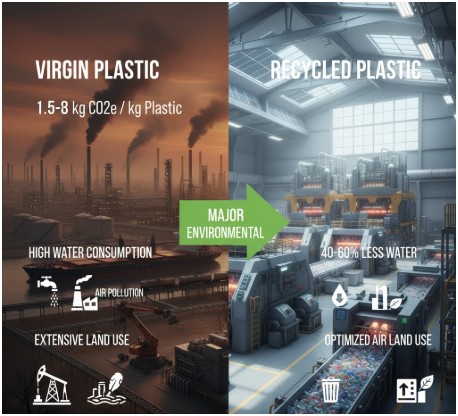
Recycled plastic offers environmental advantages extending far beyond carbon footprint reduction. Water consumption during recycled plastic production typically runs 40-60% lower than virgin plastic manufacturing, conserving this precious resource while reducing wastewater treatment burdens.
Air quality improvements represent another significant benefit. Virgin plastic production releases volatile organic compounds, particulate matter, and other air pollutants throughout the extraction and manufacturing process.
Recycled plastic production generates substantially fewer air emissions, particularly during the collection and processing phases.
Land use impacts differ dramatically between the two options. Virgin plastic production requires oil drilling operations, pipeline infrastructure, and large industrial facilities for refining and manufacturing.
Recycled plastic primarily uses existing industrial spaces and generates economic value from waste materials that might otherwise require disposal space.
However, recycled plastic faces some limitations. Quality degradation occurs with each recycling cycle, eventually requiring virgin material input to maintain product standards.
Contamination challenges can reduce recycling efficiency and increase processing requirements. Collection and sorting infrastructure remains limited in many regions, creating logistical hurdles for large-scale recycled plastic adoption.
Making the Switch: Practical Considerations
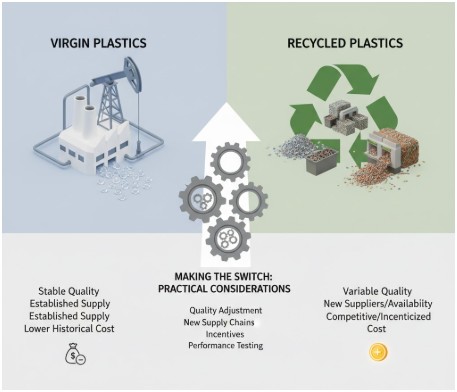
Transitioning from virgin to recycled plastic requires careful planning and realistic expectations. Quality specifications may need adjustment to accommodate the characteristics of recycled materials.
Supply chain relationships often require modification to incorporate recycled material suppliers and ensure consistent availability.
Cost considerations vary by application and market conditions. While recycled plastic historically cost more than virgin alternatives, fluctuating oil prices and increasing carbon pricing mechanisms are shifting this dynamic.
Many regions now offer financial incentives for using recycled content, improving the economic case for sustainable material choices.
Performance testing becomes crucial when switching to recycled plastic. While many applications perform excellently with recycled content, some specialized uses may require virgin materials or hybrid solutions combining both material types.
Conclusion
Now that we have explored the benefits and challenges of using recycled plastic, it is clear that it is a valuable and necessary step towards sustainable manufacturing. Despite some potential limitations, the advantages of using recycled plastic far outweigh any downsides.

